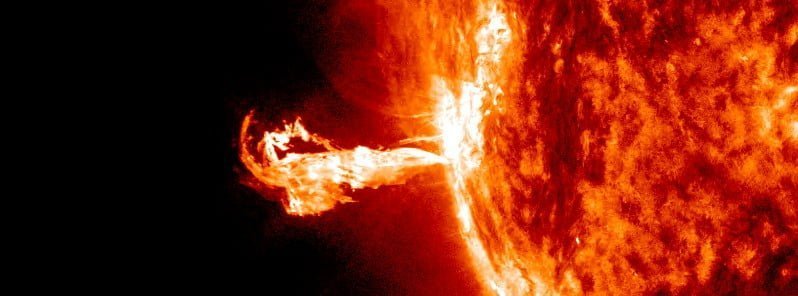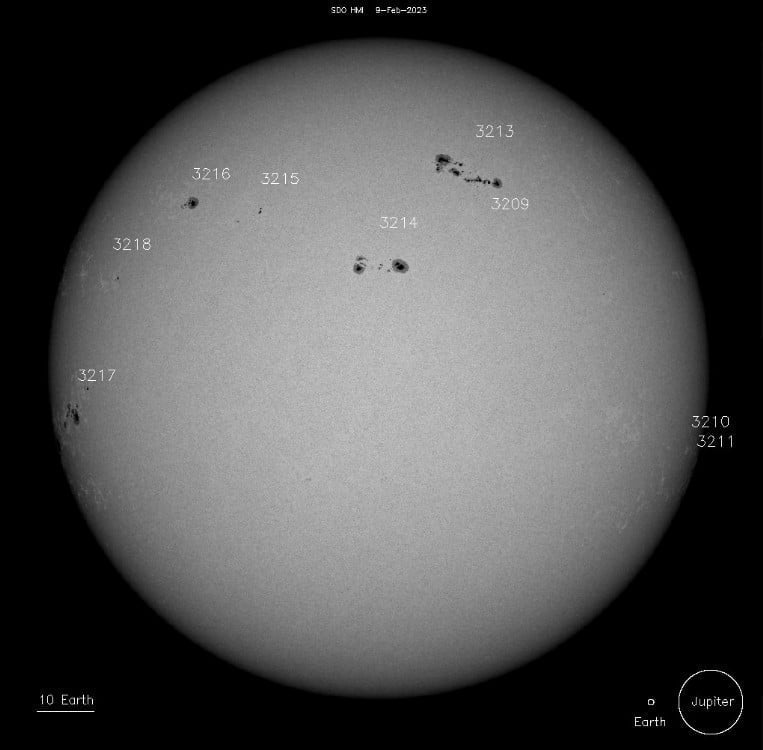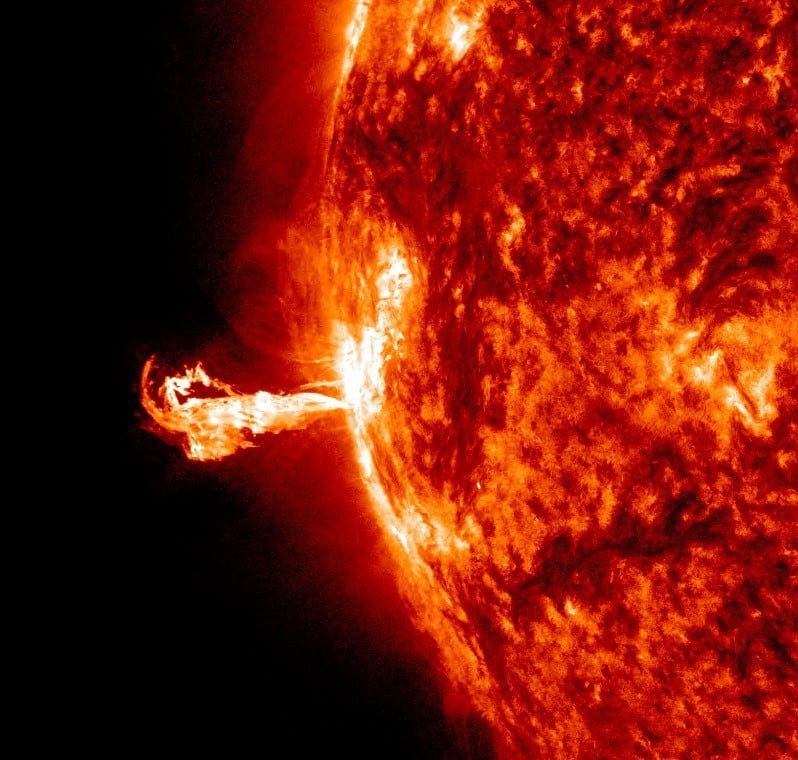Multiple M-class flares and CMEs observed

Our star displayed high levels of activity in 24 hours to 12:30 UTC on February 9, including multiple low-level M-class solar flares and coronal mass ejections (CMEs) observed on the southeast and southwest limbs.
The largest of these flares was an M3.0 that occurred at 03:10 UTC from AR 3217 located on the SE limb. While the current location of this region doesn’t favor Earth-directed CMEs, this will change in the days ahead as it rotates toward the center of the solar disk.
Sunspot region 3213 has shown continued growth in its intermediate spots and retains a beta-gamma configuration. New sunspot groups have rotated onto both the southeast and northeast limbs, while region 3218 was numbered but inactive. The remaining five active regions were stable and quiet.
At present, it appears that none of the CMEs observed on the southeast and southwest limbs are directed towards Earth, although further analysis is underway.


Solar activity is predicted to remain at moderate to high levels from February 9 to 11, with occasional M-class flares and a slight chance of an isolated X-class flare due to the flare potential of sunspot regions 3213 and 3217.
The greater than 2 MeV electron flux reached high levels, peaking at 2 520 pfu at 15:50 UTC on February 8. The greater than 10 MeV proton flux remained steady at background levels. Over the next two days, the greater than 2 MeV electron flux is anticipated to be moderate to high, before returning to normal to moderate levels on February 11.
The solar wind parameters indicated the ongoing influence of a negative polarity coronal hole high-speed stream (CH HSS). Total field strength was between 5 and 8 nT, with the Bz component ranging from +/- 7 nT. Solar wind speeds were generally between 500-600 km/s, with a predominantly negative Phi. The negative polarity CH HSS is expected to persist, although weakened, through February 10, with possible enhancements in the interplanetary magnetic field (IMF) due to glancing CME effects. An ambient-like environment is expected to prevail on February 11.
The geomagnetic field was at unsettled to active levels due to the negative polarity CH HSS effects. Unsettled to active levels are forecast for February 9, with quiet to unsettled levels expected on February 10. On February 11, mostly quiet conditions are anticipated.
References:
Forecast Discussion – Issued 2023 Feb 09 1230 UTC – Prepared by the U.S. Dept. of Commerce, NOAA, Space Weather Prediction Center
Featured image credit: NASA SDO/AIA 304, Helioviewer, The Watchers. Acquired at 09:00 UTC on February 9, 2023

When the magnetic field of the Earth is stable and strong these class flares do not create any effects. However, since Earth’s magnetic field is now weak and declining further very rapidly. Additionally, the interplanetary space has become more conductive these class flares will have noticeable effects on the geomagnetic field and the inner structures of the Earth by increasing the geological activities